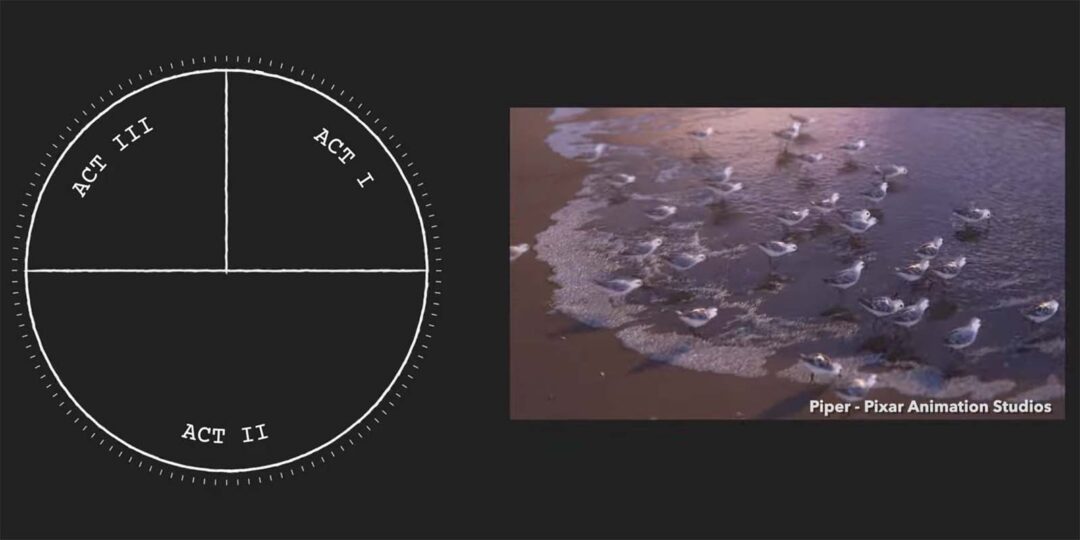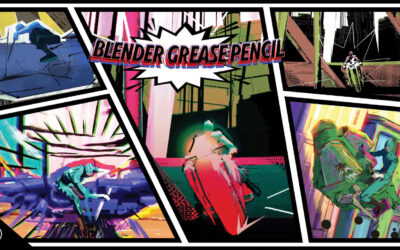Here at Wacom, we’re more focused on the visual side of the animation process: character design, animating movement, backgrounds, and the like. But you can’t make an animation if you haven’t written a story to animate! But visual art and writing can be very different skills. Where do you get started? Knowing more about story structure isn’t just a nice-to-have; it’s a game-changer for creating your best digital animations.
Compelling storytelling and tight narrative structure aren’t just fancy terms; they’re the secret sauces that draw viewers into animations and keep them hooked. A well-structured story isn’t just a nice addition to your visuals, it’s the rock-solid foundation that makes animations emotionally resonant and appealing to a wider audience.
When artists understand the fundamental structure of a story, they’re not just weaving tales, they’re crafting animations with powerful messages that captivate audiences. Mastering storytelling in animation isn’t just another important skill to learn; it’s a crucial aspect of an animator’s path to success, the driving force that captivates viewers and leaves an indelible mark.
With that in mind, let’s talk about “How to Write a Short Film in Three Acts” by Pietro Schito from Write for Animation. This video is like a treasure trove of insights into the structure of short films, with a special focus on the animated short film “Piper” from Pixar Animation Studios.
Schito’s insights are like gold for animators. Even though you might not use your Wacom for writing — though you definitely can — the core principles of storytelling and character development are essential for creating engaging narratives in animation. By understanding the structure and emotional depth of short films, artists can level up their storytelling game and effectively utilize their Wacom tools to bring their narratives to life.
1. Inciting Incident and Turning Points
This video hammers home the importance of the inciting incident and turning points in driving the narrative of a short film. Using “Piper” as an example, it shows how these elements propel the protagonist’s journey and create pivotal moments in the story.
2. Character Development
The analysis of “Piper” shines a spotlight on the protagonist’s growth and transformation, showcasing the importance of character development in a short film. It’s all about the emotional and psychological journey of the main character, Piper, as she confronts her fears and evolves throughout the narrative.

3. Embracing Change and Overcoming Challenges
This video isn’t just about storytelling; it’s about embracing change and overcoming challenges, essential elements in creating a compelling and relatable story. It’s like a crash course in how these aspects contribute to the overall impact of the short film.
4. Avoiding Formulaic Approaches
This video isn’t just a lecture; it’s a friendly warning against the common mistake of focusing solely on structural elements without considering the authentic journey of the characters. It’s all about encouraging a more genuine and character-driven approach to storytelling, highlighting the importance of the protagonist’s personal growth and experiences.
Now, why should artists and Wacom users care about all this? Well, these insights are like gold for artists using Wacom products. They dive deep into the core principles of storytelling and character development, essential for creating engaging narratives in animation. By understanding the structure and emotional depth of short films, artists can level up their storytelling game and effectively utilize Wacom tools to bring their narratives to life.
In conclusion, ‘How to Write a Short Film in Three Acts’ by Write for Animation isn’t just a tutorial — it’s a comprehensive guide to storytelling in animation, perfectly complementing the creative process with Wacom tools.

About Write for Animation
Write for Animation is a project of Pietro Schito, an animation screenwriter and producer who has worked with storytellers from Pixar, Netflix, Disney, Dreamworks, Sony Animation, and more. On the Write for Animation YouTube channel and WFA Academy, you’ll learn storytelling from top talent in the animation industry.
Each video on Write for Animation’s YouTube channel goes beyond the surface, and in the descriptions, you’ll find a hidden trove of knowledge. From insightful interviews to invaluable PDF guides and recommended readings, these descriptions are rich with additional resources. To learn more about Pietro, check out his website or follow him on Instagram.





